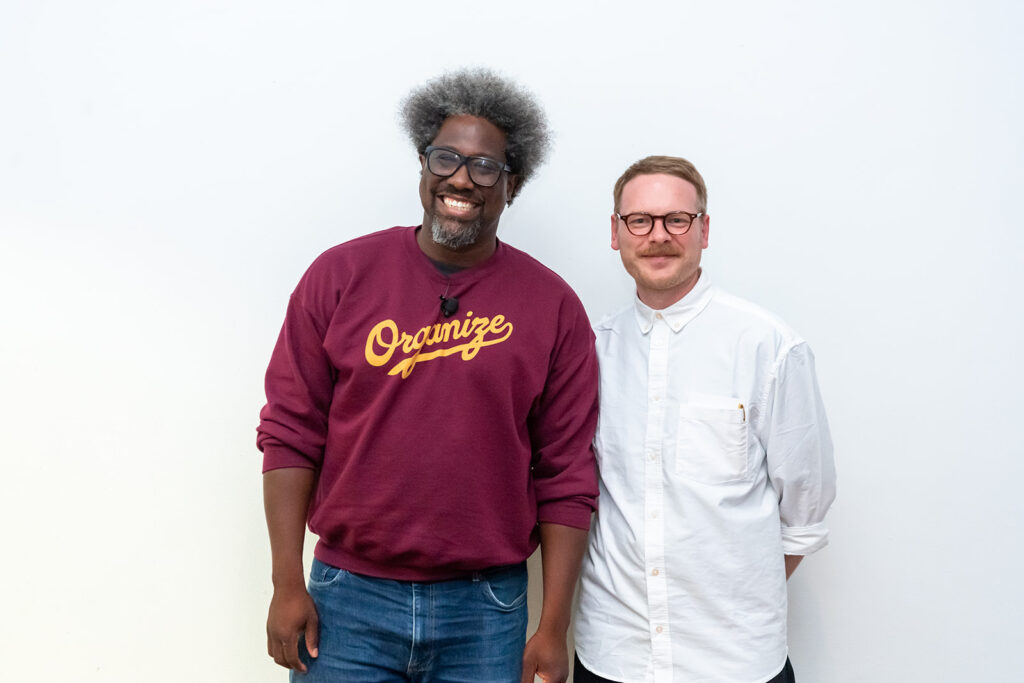4 Powerful Storytelling Lessons from W. Kamau Bell at VOICES NYC 2022

Storytelling is no easy task.
Believe me, as a writer, it can be tough to find the most engaging angle. There are countless books, guides, and opinions on how to craft a compelling story.
Storytelling is an art that is often overlooked — but with the right approach, it can help change the world.
As a communications professional, you know the power of compelling storytelling. Stories are crucial to engaging an audience and inspiring action.
Luckily, we had the opportunity to learn more about the skill from an expert.
At VOICES 2022 in New York, comedian, author, and documentary producer W. Kamau Bell sat down with us to talk about the art of storytelling.
 W. Kamau Bell with Ralf Junge-Pearl, Head of Content at Staffbase
W. Kamau Bell with Ralf Junge-Pearl, Head of Content at Staffbase
2. Make your interview subject feel valued
Right from the top of your interview, Kamau advocates for telling your interviewee that it’s a privilege to be there and to ask questions:
“You have to make the person who showed up feel like you’re lucky they showed up.”
Make them feel comfortable and appreciated. This is especially important when people are nervous — it can help ease any tension, help you connect more one-on-one, and open your interviewee up.
Kamau also recommends repeating what your interviewee said to be sure you understand correctly. By doing this, you can show that you’re actively listening. This also gives the storyteller an opportunity to reflect on what has been said and clarify any points.
3. Be empathetic
“If empathy is a stock, you can buy it. It’s low right now.”
Kamau sees a deficit of empathy in the United States. Over the course of working on United Shades for seven seasons, this observation has impacted him deeply in how he approaches his work.
That’s why Kamau has made it his goal to emphasize empathy in his interview style and storytelling.
He focuses on hearing someone’s story without judgment or prejudice. Even if two people come from vastly different backgrounds, beliefs, and life experiences, they can reach common ground through empathy.
Kamau highlights a couple of key questions that storytellers can ask themselves to achieve this:
“How do I create empathy with this person? How do I let go of my preconceived notions and then build them back up through this conversation?”
But Kamau also points out that empathy isn’t always easy to practice.
 W. Kamau Bell on the main stage at VOICES 2022 in New York City.
W. Kamau Bell on the main stage at VOICES 2022 in New York City.
Ready for more storytelling insights? Join us at VOICES 2023
We were privileged to hear W. Kamau Bell speak at VOICES 2022.
And we can’t wait for more great insights into all things storytelling and employee communication at VOICES 2023.
Want to join us? You’ll be part of the biggest employee comms event worldwide, with the best speakers, plenty of networking, and great entertainment.
See you in New York for VOICES 2023 on April 26 and 27! 🎉









